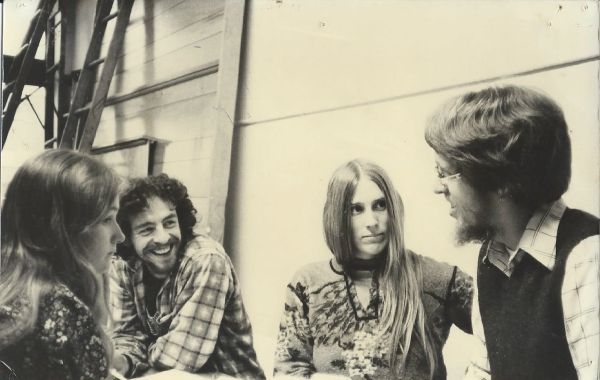- Men in Black at the Food Stamp Office – By Joe Tougas
Donna, Sally, and I were talking over dinner the other evening about the way that the level of friendliness toward strangers had changed over the years, especially the way that people had become a little more guarded in how they interacted with government officials.
Donna said, ”There was that time at the food stamp office, right? Did I ever tell you about that? Now that was a pretty flagrant example of hostility.”
“No,” said Sally. ”I don’t think I ever heard about that.”
- Olympia Farmers Market – By Becky Liebman
The early days presented a consummate catch-22 situation. Growers did not want to participate unless there were customers. Customers would not return if there wasn’t produce to buy. As manager, I considered myself a marketing genius: I would call numbers I found in the classified ads of the Daily Olympian with a pitch something like, “I see you’re selling cucumbers. Did you know we have a farmers market in Olympia, open every Friday and Saturday alongside Capitol Lake?” Slowly the word spread.
- Laura May Abraham Booker and Food Co-ops – By Stephen Charak
We had searched diligently for a place to go. Next we moved to the corner of Fifth Avenue and Jefferson downtown. There’s an empty lot at that corner now [in 1988]. There was a funky, old, two story dilapidated green apartment building on the corner and a woman real estate agent . . . showed us this apartment building. We asked if we could put a store there. She said, “You could do anything here. You could sell babies out the back door.” I never forgot that.
- Making Hay While the Sun Shines – By Joe Tougas
Cold Comfort Farm took the “Farm” in its name seriously. We thought of ourselves on the model of agricultural co-ops. We wanted to be independent, creative, revolutionary. We were pretty smug about our agrarian accomplishments. Although our knowledge of small-scale farms was spotty and romanticized (not to mention borderline illegal) we were proud of our worn-out overalls and home-grown strawberries and broccoli.
- How Small is Beautiful Led to FWC – By Gordon White
We had a shared commitment to making a living by growing food in ways that would be more sustainable on the land and reconnect the community to the local food supply. Our backs were strong and our sleep needs minimal, so we swam into this “bargain with nature” with sure strokes and no fear.
- Practicing the Revolution: Making Bagels – 1974 – Don Orr Martin
They left me alone with the bagel machine. They neglected to explain how to control the speed or shut it down. For a while I had no trouble keeping up, but soon I was like Lucy in the chocolate factory.
- Emma Goldman Joins the Co-op Movement – By Don Orr Martin
Representatives from each household would meet weekly at a member’s house. We had product lists from the wholesale suppliers with whom we had previous ties and we would order items in bulk, purchasing only an amount we could completely divide up, keeping no inventory. We would bid on portions of wheels of cheese from Peterson’s in Seattle, crates of milk from Flett Dairy, sacks of oats and rice from Cooperating Community Grains, boxes of fruits and vegetables from Nisqually Valley Produce. These meetings were a little like the New York Stock Exchange: initial orders were compiled, then bids were taken to increase or decrease a family’s order until we reached a case lot.
- The Launch of the Columbia Street Food Co-op – By Anna Schlecht and Beth Hartmann
In 1977, the brand new storefront Co-op was coming together, the result of volunteers building shelves, plugging in coolers, and setting out the food. Over the years, the migrating co-ops had gone through numerous incarnations. Finally, the Columbia Street Food Co-op emerged in its current form, built on an organizational foundation that would last into the future. We were both part of the launch of this community cornerstone.

